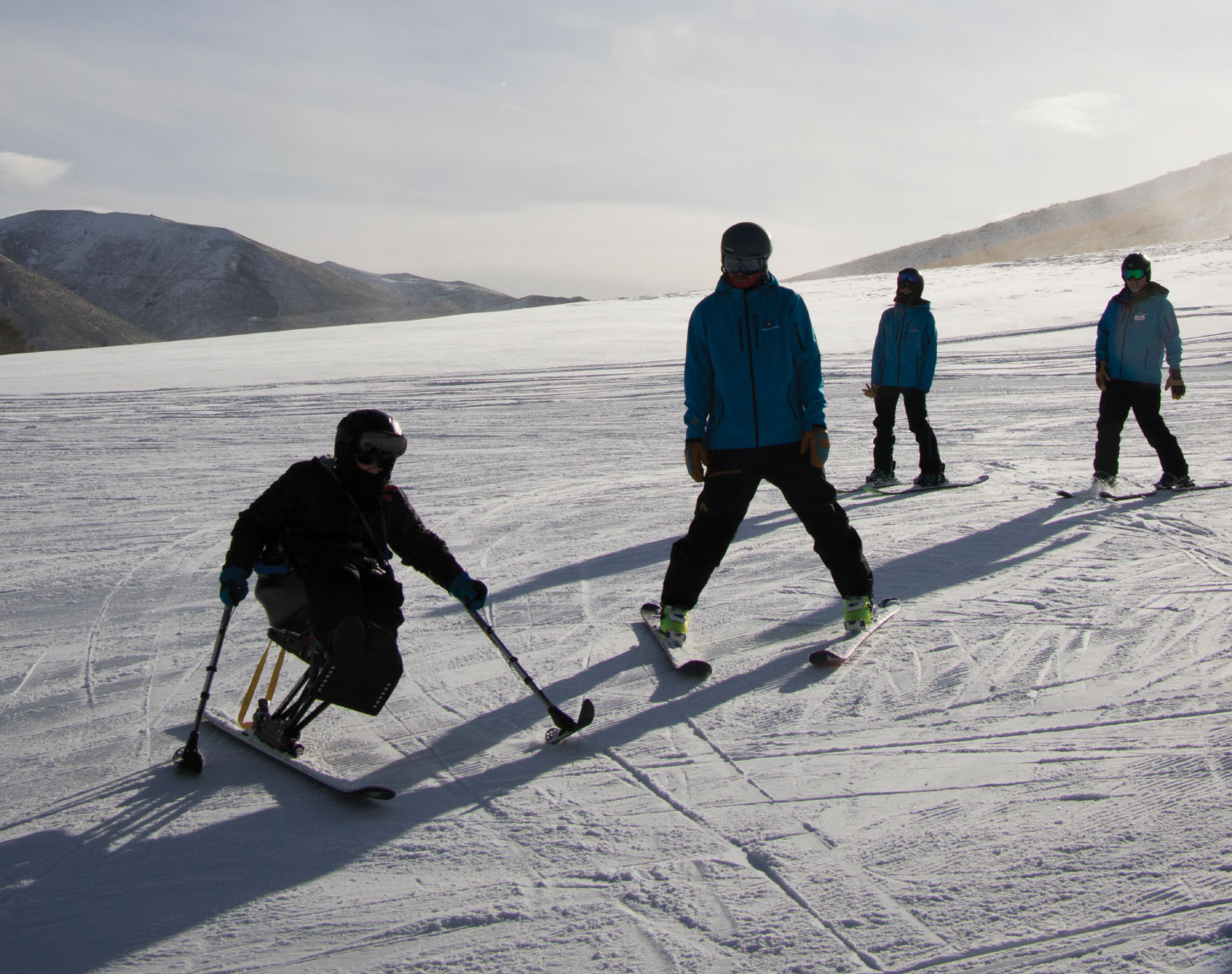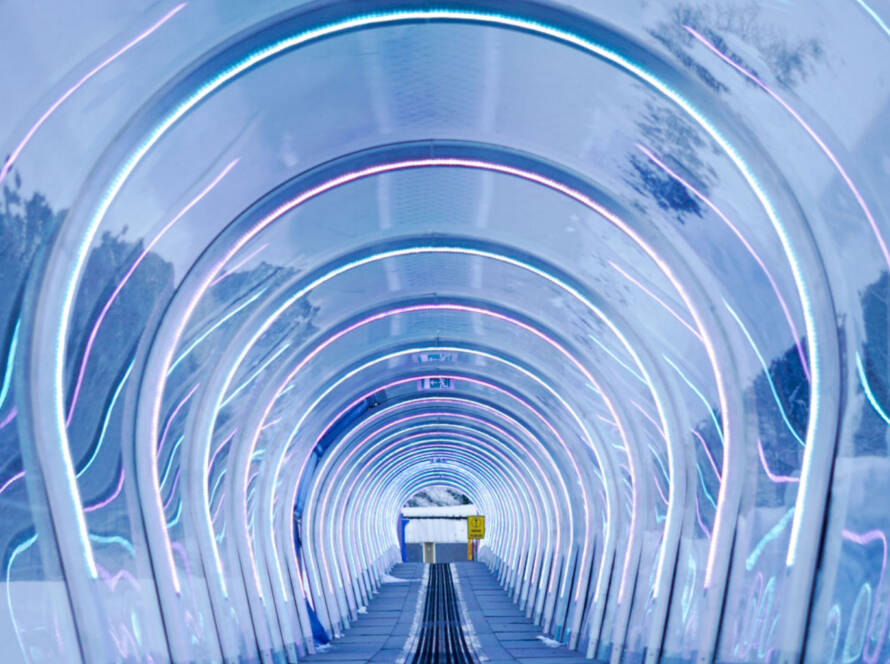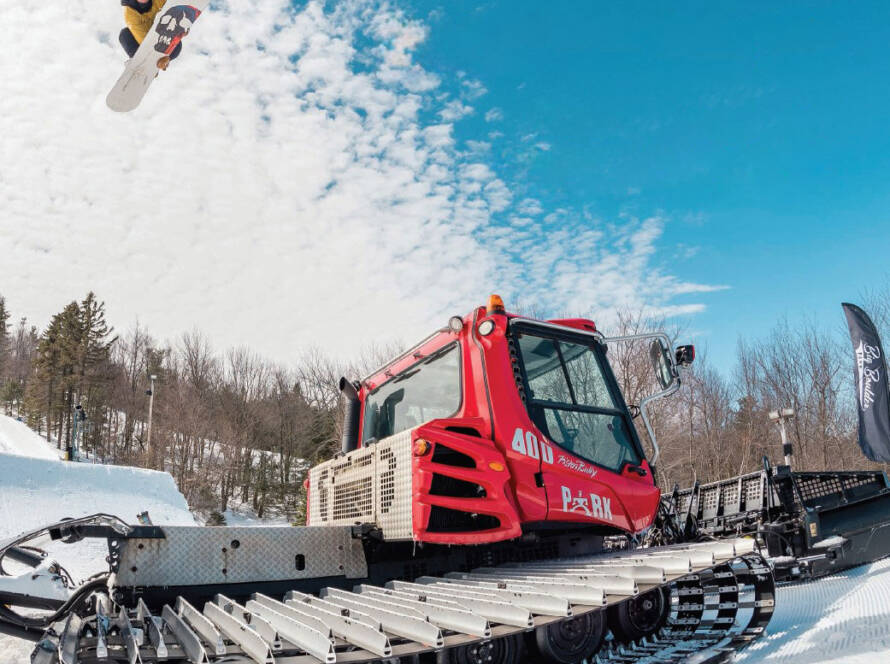Picture this: You’ve come to a new ski resort for a weekend stay with friends and family. You’re a little nervous, but mostly really excited because, to the core of your being, you identify as a Skier. You’ve been on skis since you could walk, your entire family skis and you couldn’t imagine life without the opportunity to carve into fresh powder every winter.
Now imagine that you’re at the bottom of the mountain. You can smell the snow, hear the creak of the lifts as they gather up riders, feel the breeze rolling and bucking down the mountain, adding an extra shiver to the one of excitement already rocketing down your spine.
But you can’t see any of it because you’re legally blind from an accident sustained at work six years ago. And this is the first time you’re back in your ski boots.
If a person with this disability – or any disability, for that matter – was experiencing what was just described at your resort, would they be able to easily venture up the mountain and have an incredible time? Or would their experience end before it even began, at the bottom of the mountain because of a lack of trained staff, lack of equipment – or lack of any plan to accommodate visitors with physical or intellectual disabilities?
Having accommodations and programs in place for individuals with disabilities just makes sense. Yes, it may seem overwhelming to think about an adaptive program when starting from nothing, and you may wonder where you’re going to get the money for the equipment and staff that is necessary to even compete in this market. But what it comes down to is simple: everyone should have the opportunity to experience the exhilarating joy of snow sports, no matter whether they can see the mountain with their own eyes or simply feel it.
First steps to access
Accessibility of your resort and making sure you’re inclusive of individuals with disabilities doesn’t have to be overwhelming. Knowing how to get started and move the initiative forward is half the battle.
Jeff Burley is the director of adaptive sports at Higher Ground USA in Ketchum, Idaho, a non-profit organization that provides adaptive recreational programs for individuals with disabilities as well as programs specific to former military personnel with disabilities. Whether it’s playing in the snow with a four-year-old born with an intellectual disability or cross-country skiing with a group of veterans with PTSD, Higher Ground focuses not on the disability of their visitors, but on what they can do.
In Burley’s opinion, the first thing to do when starting to think about the accessibility of your resort is to look at it from someone else’s perspective.
“You have to make yourself approachable,” he said. “People still love the sport and the places they used to go before they, for example, sustained the injury that changed their life. These people are skiers and snowboarders, and they want to get back to that. You can’t expect people with disabilities to come to you to learn how to ski when you don’t have parking spaces or accessibility.”
Catherine Cosby, director and founder of the Ski 2 Freedom Foundation, says that its natural for the implementation of an adaptive winter sport program to take years to fully develop, but resorts simply need to make the commitment.
“Ninety-nine percent of the time, programs have been started by a ski school, an instructor or someone living in the resort region who has a passion to share their love of skiing and the mountains and may also have a personal reason to initiate an accessible program. Then, it’s a question of evolution. It can take some years but, once things have started, then it’s about building an infrastructure that takes into account the needs of those who require adaptive equipment, instruction, somewhere to stay, accessible restaurants and washrooms, etcetera,” Cosby said.
That happens to be the exact way that Jamie McCullough, executive director of Rocky Mountain Adaptive Sports Centre in Canmore, Alta., got his world-
renowned program off the ground.
“I had come over from Britain to work as a ski school instructor at Sunshine Village in Banff. Due to having a sister who lives with Autism, who I’d taught to ski over in Europe, (adaptive programming) was where my main passion was. Sunshine had no adaptive program. So, I approached their ski school director, Stewart Laver, and asked if I could look at setting up an adaptive program. He was like, ‘Go for it! That’s awesome!’”
Train the trainer – and then some
As a resort, your overarching goal is to provide your guests with the best, most positive experience possible in order to draw them back season after season. The exact same goal is and should be applied to guests who are living with a disability. To decide on an adaptive program means to commit to properly training your staff and volunteers, ensuring all areas of the resort are accessible and up to legislative standards, making sure all necessary equipment is on hand and working properly and more.
“The lift operators are the key to the whole venture because, without their help, it’s impossible for people to access the mountains!” said Cosby. “Training them to understand the needs of all groups is vital – to experience what it is like for a visually impaired skier, a child with a neurological condition or a paraplegic skier in a sit ski – so there is empathy there, so they truly understand all that’s being asked of them.”
Training staff and volunteers so they can teach and assist in an adaptive program is certainly important. But ensuring you have the proper equipment and that people are trained to use it properly also matters significantly.
“The big thing is seat height and educating operators on what to do with the equipment,” said Burley. “For example, chair number 34 is adaptive so they ping it. When it gets to the top, they may need to slow it down or just be more alert. You also need to practice evacuations and getting people off of chair lifts annually. Entries and exits to slopes and trails, that’s where grooming comes in. And just, how do people access things? There is a customer service element to everything.”
Training people who are already passionate about helping people with disabilities learn to ski and snowboard can make a huge difference in the success of your adaptive program. But the biggest factor when it comes to the people involved in your program, whether it be staff or volunteers, is what they already know.
“There has to be experience and knowledge that goes with that passion,” said McCullough. “There are so many variables and criteria that you need to know about. For example, fitting someone who has a spinal cord injury and assuming you can sit them in a sit ski – it’s not as simple as that. What sit ski? What fitting are you going to do relative to that individual’s body? Have they been susceptible to pressure sores in the past, creating the potential to cause serious injury or health issues if not fitted properly? Do you have catheter bags? There needs to be that knowledge base.”
Know your why
To take an adaptive program from good to great means knowing exactly why you’re doing what you’re doing. For far too long, people living with disabilities have been regarded as second-class citizens. And that simply has to stop.
“It really is a civil rights law,” said Burley. “This group has not had access to rights and to quality of life, and that’s what we’re trying to overcome. People are skiers and identify themselves as skiers. They want to come back to it. There is equipment out there and it’s easily attainable. How do we make the best use of the individual’s functional abilities – that’s what we focus on. We don’t look at their disabilities; we look at what they can do.”
Creating an adaptive program is good for everyone: the resort, the guests and the surrounding community. Accessibility of amenities off the resort is just as important as accessibility on the resort, but can sometimes be a lot more challenging to obtain. If you’re a local ski hill trying to start an adaptive program and attract a specific market, but the nearest town has no hotels with accessible rooms up to code – that’s a huge roadblock to the success of your program, to say the least.
Yes, there is federal legislation that sets certain standards for accessibility of public spaces such as hotels and restaurants. But there are other, more localized laws that can sometimes get in the way of ensuring anyone who comes to a mountain town has a suitable safe place to eat, sleep and have fun.
“Our organization is based out of Canmore, Alberta, but we operate throughout the whole area,” said McCullough. “Just this past summer, we have had four brand new hotels built. Two of those hotels don’t have any accessible rooms. You can’t get away with that in Ontario, and British Columbia is starting to follow suit. But the other provinces? No. There’s very little legislation there. It’s incredibly frustrating.”
The change that needs to happen begins on the slopes, within ski schools, within the hearts of instructors and directors. It’s recognizing the opportunity to not only increase revenue over time by widening the target market, but also positively impacting the quality of life of everyone who wants to participate in snow sports – not just people who are able-bodied and can afford it.
“Let’s not forget that there is a business behind every ski resort,” said Cosby. “By ensuring you make (the resort) as accessible and inclusive and welcoming as possible, then that is income for the local community, more jobs for people in the area and a greater chance of making people more aware of their environment with life-changing experiences.”
People who are confident in themselves and their abilities tend to contribute positively to the lives of others and to the world around them, whether it’s through their work, their hobbies or their relationships. This is no different when it comes to the confidence level of individuals living with disabilities. Being part of cultivating confidence and seeing the change in someone as they learn and master a risky skill like skiing or snowboarding is why McCullough, Burley and Cosby do what they do.
“Learning to ski on their own gives individuals the self-esteem, the opportunity to approach other challenges they may be having in their general life, and [understanding] they can break all those other barriers, too,” said McCullough.
“My wife is Muffy Davis,” said Burley. “She was an able-bodied, walking person who broke her back ski racing. She made the national team then broke her back while training, then came back and competed as a disabled athlete and won four medals; 25 world cup golds. (Now, she has) seven medals in the Paralympic Games and is in the US Ski and Snowboard Hall of Fame. Then she went to cycling and won three gold medals in the London Paralympic Games when she was 40 after she’d had a kid. She won her 16-kilometer race in over two minutes. There are people who look at Muffy, who’ve lost limbs, etcetera and they know they can get through it and go on to do great things because she’s done all these great things.”
Allow yourself to imagine what it might be like to have a different set of circumstances than what you have right now. Visualize the first mountain you ever skied or the local hill where you were taught to ski as a child and remember what it was like to fly through that powder or come to the bottom of the hill on your own for the first time. Feel the excitement, the confidence, the sheer joy as you look forward to this next season and all the plans you’ve made to take advantage of the winter months by shredding all across different hills and mountains because they are fully accessible to you as an able-bodied snow sports enthusiast.
As an instructor, a resort owner, a volunteer, a family member – be the change the industry and the world need so the blind person next to you can experience that same excitement, that same joy – and be sure there’s shredding for all.




